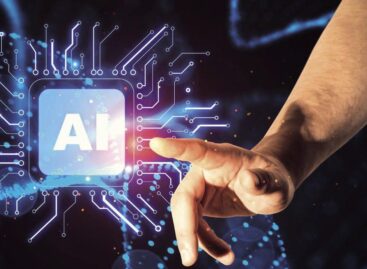Humanoid robots in logistics: science fiction today, reality tomorrow?
Humanoid robots have long been part of visions of the future. Initial practical experiences show that the technology could also be used in logistics in the medium term. Always open to innovation throughout its nearly 100-year history, Dachser is keeping a close eye on developments in this area – with the help of Andre Kranke, Head of Corporate Research and Development at Dachser, we summarize the challenges and opportunities facing logistics companies in this area of future technology.
 Humanoids are robots that model the human body in terms of their shape and movement: they typically have two arms, two legs, a torso and a head. They are designed to perform tasks in an environment designed for humans. Their sensors allow them to see, hear and touch to some extent, while their software allows them to interact and learn.
Humanoids are robots that model the human body in terms of their shape and movement: they typically have two arms, two legs, a torso and a head. They are designed to perform tasks in an environment designed for humans. Their sensors allow them to see, hear and touch to some extent, while their software allows them to interact and learn.
Also worth mentioning is anthropomorphic robotics, which focuses more on individual social characteristics: these are robots with specific human or animal characteristics, such as facial features, limbs or emotional behavior. These characteristics can be particularly important in areas such as nursing or hospitality.
Human-like robots: the United States and Asia lead the way in development
Prototypes of humanoid robots are already capable of performing complex movements such as running, jumping and navigating uneven terrain. They are an impressive demonstration of how much the technology has advanced in recent years. In addition, “humanoids” are becoming increasingly adept at recognizing speech and gestures, analyzing facial expressions, and can perform simple tasks in well-defined environments, such as grasping objects or sorting containers.
Well-known models such as Boston Dynamics “Atlas”, Agility Robotics “Digit” and Figure “Figure 01” walk on two legs, have two arms with simple grasping hands, and are designed for use in industrial environments. The “humanoids” from American companies weigh between 50 and 70 kilograms, are 1.5 to 1.75 meters tall, and can walk at a speed of 5 kilometers per hour. Their operating time is currently no more than one hour, but this is expected to increase. Most suppliers in this rapidly growing market come from the United States, China, India and South Korea. As one of the few German and European companies, Neura Robotics, based in Baden-Württemberg, is trying to keep up with the global market with its “4NE1” model.
In the future, humanoid robots are expected to adapt very flexibly to changing tasks – without complicated programming or major modifications. They can then be used in logistics in existing locations where people are also working and can take over certain tasks, such as lifting, sorting or moving goods.
Challenges and high costs
Despite impressive progress, humanoid robots face three main technical challenges:
- Ambience and balance: Walking on two legs requires complex stability mechanisms to prevent falls – especially in unfamiliar environments.
- Power supply: Batteries currently have a limited lifespan. The goal is at least four to five hours of operating time, with fast charging times.
- Sensors and software: Further developments are needed in the combination of artificial intelligence, sensors and control systems to enable robots to interact reliably and autonomously with humans. Another major challenge is “feeling”, for example, to be able to safely lift fragile objects.
Acquisition and operating costs are also an obstacle. Humanoid robots are not economically attractive in many application areas due to high material and development costs. However, mass production could significantly reduce prices in the coming years.
Analysts expect humanoid robots to be increasingly used in logistics from 2030 onwards, especially in areas with a high labor shortage and ergonomically demanding tasks. Technological advances in artificial intelligence, sensor technology and hardware can further strengthen the development of the field.
Issues of acceptance and efficiency
In addition to economic efficiency and technical functionality, two other aspects will determine whether humanoid robots will actually find a place in logistics. First, employees must be convinced that they will accept humanoid robots in the future.
Related news
GVH: Artificial intelligence will also transform competitive conditions
🎧 Hallgasd a cikket: Lejátszás Szünet Folytatás Leállítás Nyelv: Auto…
Read more >AI-ready NAT creation is required
🎧 Hallgasd a cikket: Lejátszás Szünet Folytatás Leállítás Nyelv: Auto…
Read more >Careless corporate use of artificial intelligence can also violate trade secrets
🎧 Hallgasd a cikket: Lejátszás Szünet Folytatás Leállítás Nyelv: Auto…
Read more >Related news
The fruit and vegetable sector needs improvement
🎧 Hallgasd a cikket: Lejátszás Szünet Folytatás Leállítás Nyelv: Auto…
Read more >Rapid changes, adaptive path
🎧 Hallgasd a cikket: Lejátszás Szünet Folytatás Leállítás Nyelv: Auto…
Read more >Business Days elective course: a weekend programme establishing a new tradition
🎧 Hallgasd a cikket: Lejátszás Szünet Folytatás Leállítás Nyelv: Auto…
Read more >






